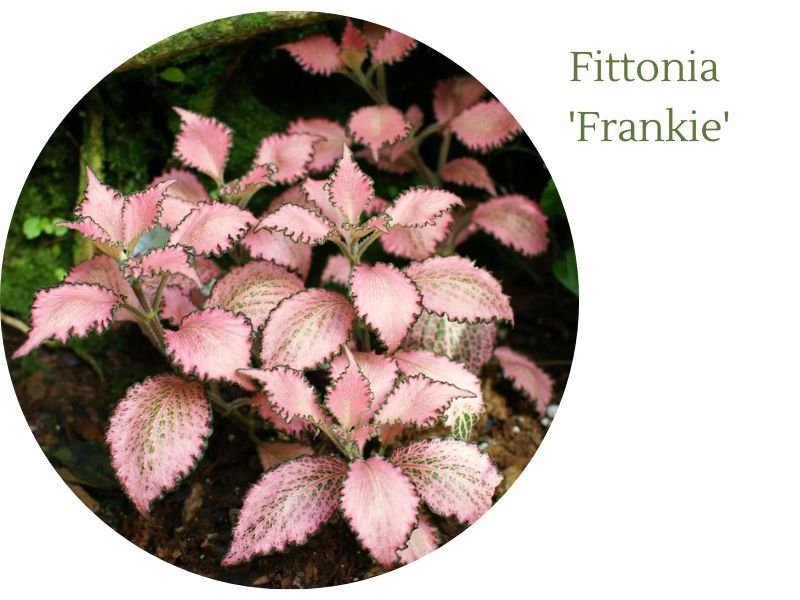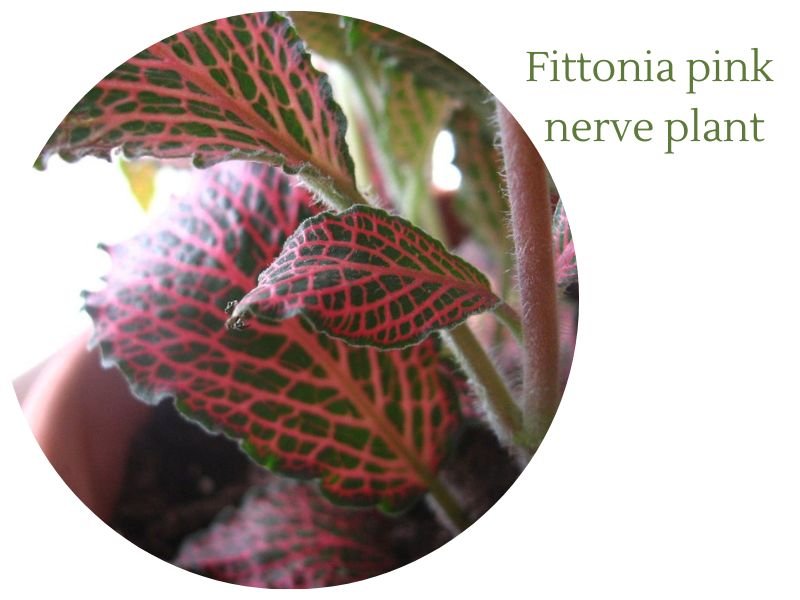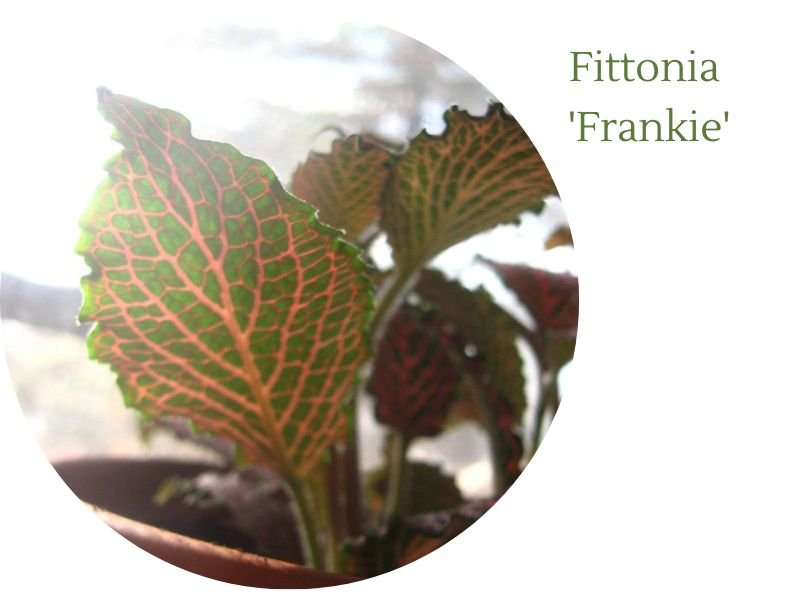Have you ever heard of the Fittonia Frankie plant? This beautiful and unique plant is a must-have for any indoor plant enthusiast. With its intricate leaf patterns and colors, the Fittonia argyroneura ‘Frankie’ (pink nerve plant) is sure to add a pop of color and interest to any space.
Table of Contents
Brief Overview of Fittonia Frankie Plant

The Fittonia Frankie plant, also known as the nerve plant or mosaic plant, is a tropical foliage plant native to South America. It gets its name from the intricate network of veins that run through its leaves, giving it a mosaic-like appearance. The leaves come in various shades of green with white or pink veins depending on the variety.
This stunning little houseplant is perfect for adding color and texture to any area in your home. Whether you’re looking for a low-maintenance addition to your workspace or an eye-catching centerpiece for your living room, the Fittonia Frankie is sure to fit the bill.
Importance of Caring for Indoor Plants
Indoor plants are more than just decorations – they provide many benefits that can positively impact your physical and mental health. Not only do they purify the air by removing toxins such as formaldehyde, benzene, and trichloroethylene, but they can also help reduce stress levels and enhance productivity.
In addition to their health benefits, indoor plants can add aesthetic value to any space by bringing life and vibrancy into otherwise sterile environments. Whether you’re working from home or simply looking for ways to improve your living space, incorporating indoor plants into your decor can be a great way to create an inviting atmosphere.
What is Fittonia Frankie Plant?

Fittonia Frankie plant, also known as Fittonia argyroneura ‘Frankie’ (pink nerve plant), is a low-growing, bushy houseplant native to the tropical rainforests of South America. It has become popular in recent years for its striking foliage and unique leaf patterns that come in shades of pink, red, green, and white.
This small but mighty plant has the power to add a pop of color to any dull space and can be grown both indoors and outdoors. One of the most distinguishable features of the Fittonia Frankie plant is its stunning leaf patterns, which are often described as having a “vein-like” appearance.
The leaves are oval-shaped and grow up to 3 inches long. The colors range from bright green with white veins to dark green with pink or red veins.
The contrast between the colors creates an eye-catching display that can brighten up any dull space. In addition to its aesthetic appeal, the Fittonia Frankie plant has several benefits for those who choose to keep it around their homes or offices.
For one, it’s an excellent air purifier – studies show that it can help remove harmful toxins like formaldehyde and benzene from the air we breathe. It also has stress-reducing properties that make it a great addition to any workspace or living area.
How to Care for Fittonia Frankie Plant

Ideal Lighting Conditions for Growth: Don’t Keep It in the Dark!
Fittonia Frankie plants thrive well in bright, indirect light. They do not do well with direct sunlight exposure, so it is important to keep them in a place where they can get bright but filtered light. If you place your Fittonia Frankie plant in direct sunlight, it will cause its leaves to wilt and discolor, leading to irreparable damage.
To ensure that your Fittonia Frankie plant is getting enough light, position it near a window where it can receive bright but indirect sunlight. You can also add artificial lighting sources like grow lights or fluorescent tubes if you don’t have access to natural light sources.
Watering Needs: The Key Is Consistency
The watering needs of your Fittonia Frankie plant depend on the temperature and humidity levels of its environment. As a general rule, you should water your plant once a week during warmer months and reduce watering frequency during colder months when the soil dries out more slowly. Be sure not to overwater or underwater your Fittonia Frankie plant as both scenarios can lead to root rot, which is fatal for most houseplants.
To avoid overwatering, make sure that the top soil layer has dried out completely before watering again. Additionally, use well-draining soil mixtures that allow excess water to drain away from the roots.
Soil and Fertilization: Choose the Right Soil Mix
Fittonia Frankie plants require soil that is nutrient-rich and well-draining. You should use a potting mix specifically formulated for indoor plants as these mixtures tend to be more aerated than garden soils, allowing better drainage.
It’s wise also to fertilize your Fittonia Frankie plant every two weeks during the planting season using a balanced fertilizer. You can use organic compost or commercially available liquid fertilizers with equal success.
Fertilization helps to provide the necessary nutrients to your plant, promoting healthy growth and vibrant coloration. Overall, giving adequate lighting, consistent watering, and proper soil and fertilization are crucial elements to ensure that your Fittonia Frankie plant thrives in your home environment.
Troubleshooting Common Issues with Fittonia Frankie Plant

Leaf curling or wilting
If you notice that the leaves of your Fittonia Frankie plant are curling or wilting, there could be a few reasons behind it. One of the most common causes is underwatering. These plants love moisture and require regular watering.
If you’re not watering them enough, their leaves will start to dry out and curl up. Another possible cause could be overwatering, which can lead to root rot.
This happens when the roots sit in water for too long, causing them to become mushy and unable to absorb nutrients properly. To avoid this problem, make sure you’re only watering your Fittonia Frankie plant when the top inch of the soil is dry.
If neither of these issues seems to be the problem, it’s possible that your plant is experiencing stress due to changes in its environment. For example, if you recently moved it from one location to another with different lighting conditions or temperature levels, it may take some time for it to adjust.
Yellow leaves
Yellow leaves on a Fittonia Frankie plant can indicate several issues as well. One common cause is overwatering, which can lead to root damage and poor nutrient absorption.
If you notice yellow leaves on your plant and suspect overwatering may be the culprit, try adjusting your watering schedule by allowing the soil to dry out more between waterings. Another possible cause of yellowing leaves is a lack of nutrients in the soil.
Make sure that you’re using a fertilizer specifically formulated for indoor plants like Fittonia Frankie and follow the instructions carefully. Over-fertilization can also harm your plant so be aware not to go beyond what’s necessary.
but not less important sunlight exposure might cause leaf yellowing too much direct sunlight will scorch their delicate foliage making it appear yellow. Ensure your Fittonia Frankie is placed in an area with indirect sunlight, especially during the hottest part of the day.
Overall, when troubleshooting issues with your Fittonia Frankie plant, make sure to assess its environment and care routine. With a little attention and care, you can help your plant thrive and enjoy its unique beauty for years to come.
Propagation Techniques for Fittonia
Fittonia is a plant that you’ll want in every room of your house. And once you have one, why not propagate it and spread the joy to other parts of your home or even give it as a gift to friends? Propagating Fittonia is relatively easy.
You can do it by stem cuttings or leaf cuttings. Stem cuttings should be taken from healthy and mature stems, at least 3 inches long, preferably with 2-3 leaves attached.
Remove any leaves from the bottom half of the stem and dip them in rooting hormone if desired. Plant the cutting in moist potting soil and cover it with a plastic bag to maintain humidity while roots develop.
Keep the soil moist but not soaked until new growth appears. Leaf cuttings are also an option if you don’t want to remove entire stems from your plant.
Cut off a healthy leaf with its petiole (stalk) and insert it into moist potting soil, making sure that at least half of the petiole is buried in the soil. Cover with a plastic bag or dome until new growth appears.
Conclusion
The Fittonia argyroneura ‘Frankie’ (pink nerve plant) is an excellent addition to any indoor greenery collection due to its unique color patterns, low maintenance requirements, and air purification properties which enhance living conditions by promoting calmness and relaxation. Caring for this lovely plant requires moderate lighting conditions avoiding direct exposure to sunlight since overexposure can lead to wilting or sunburnt leaves; watering once or twice weekly during summer months and less during winter months; using appropriate fertilizers for optimal growth; keeping humidity levels high through constant misting while ensuring proper drainage mechanisms are put in place.
In addition to their benefits as houseplants, these plants are also great for propagating – so why not share them with family and friends? Overall, the Fittonia Frankie plant is a great plant to have in your home for its beauty, benefits, and easy maintenance.
More read:
- The Best Indoor Plant Grow Lights for Thriving Houseplants
- Gardening Books: Essential Reads for Green Thumbs
- DIY Garden Projects: Creative Planting Ideas
- The Ultimate Guide to Organic Fertilizers for Healthy Plant Growth
- Must-Have Garden Insecticide for Pest Control Solutions

Gardening is my passion and growing plants indoors has always been a stress relief for me. Grow a banana tree in my apartment once (although failed to produce bananas).






